Tuners on 12 fret C. F. Martin Guitars
Martin guitars produced from 1833 to 1929, with necks built with 12 frets clear of the body, generally have one of three styles of tuners: enclosed tuners on a Stauffer style headstock, ebony or ivory pegs on a solid headstock, or geared machines designed to fit a slotted style headstock.
Stauffer Style Gears
The earliest guitars built by C. F. Martin had a headstock in the style of the guitars built by his mentor, Johann Stauffer, which utilised gears enclosed by a metal plate, with six tuning pegs in a row on one side of the headstock, a feature which was later borrowed by the Fender Company.
c. 1820's Guitar attributed to Johann Stauffer
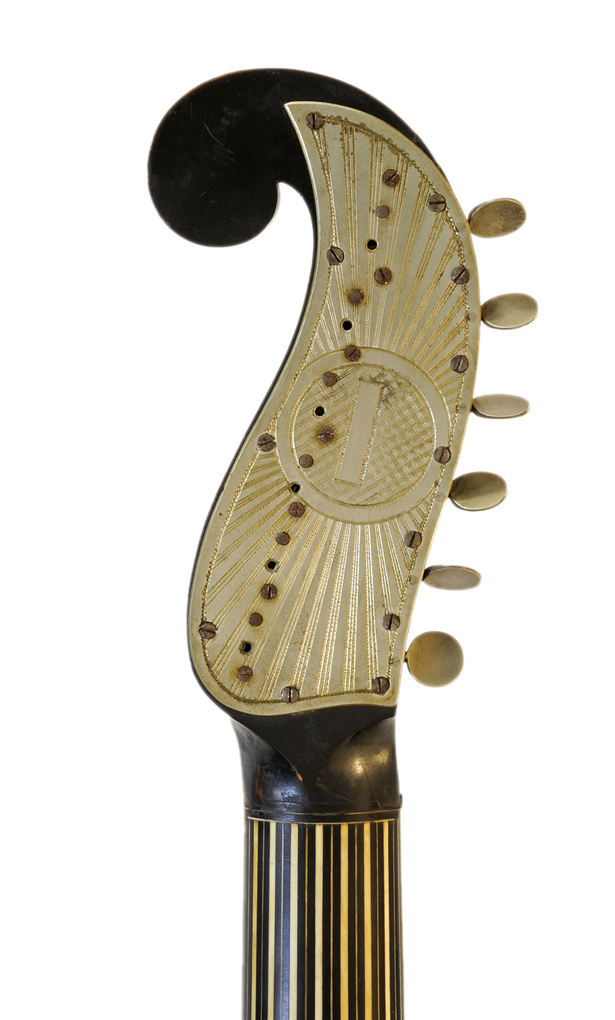
Martin & Coupa Koa
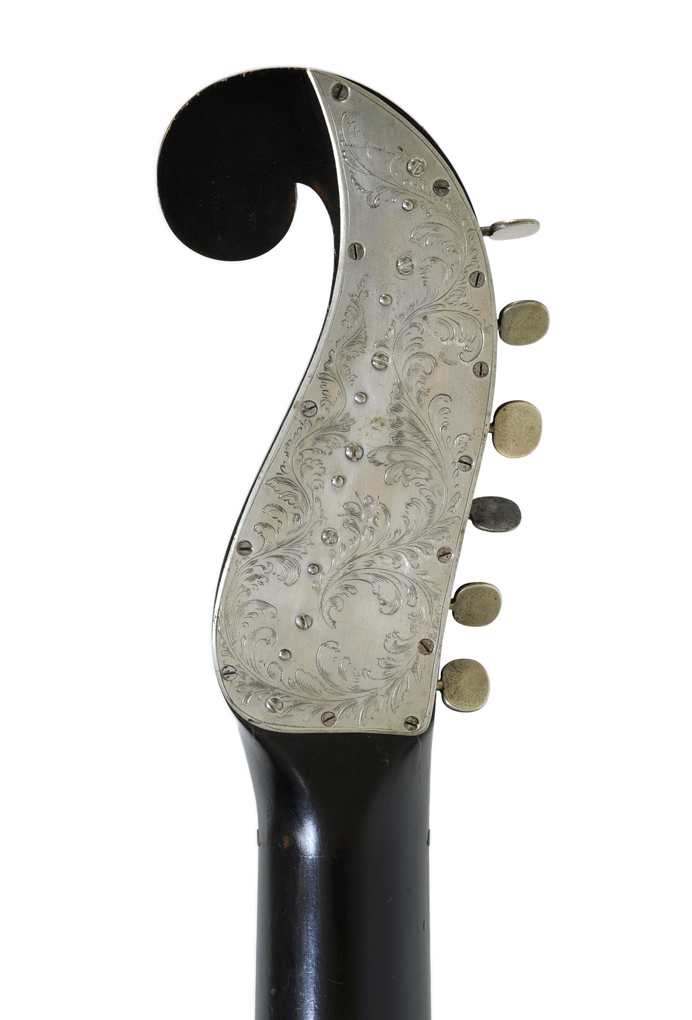
Martin & Coupa Spanish
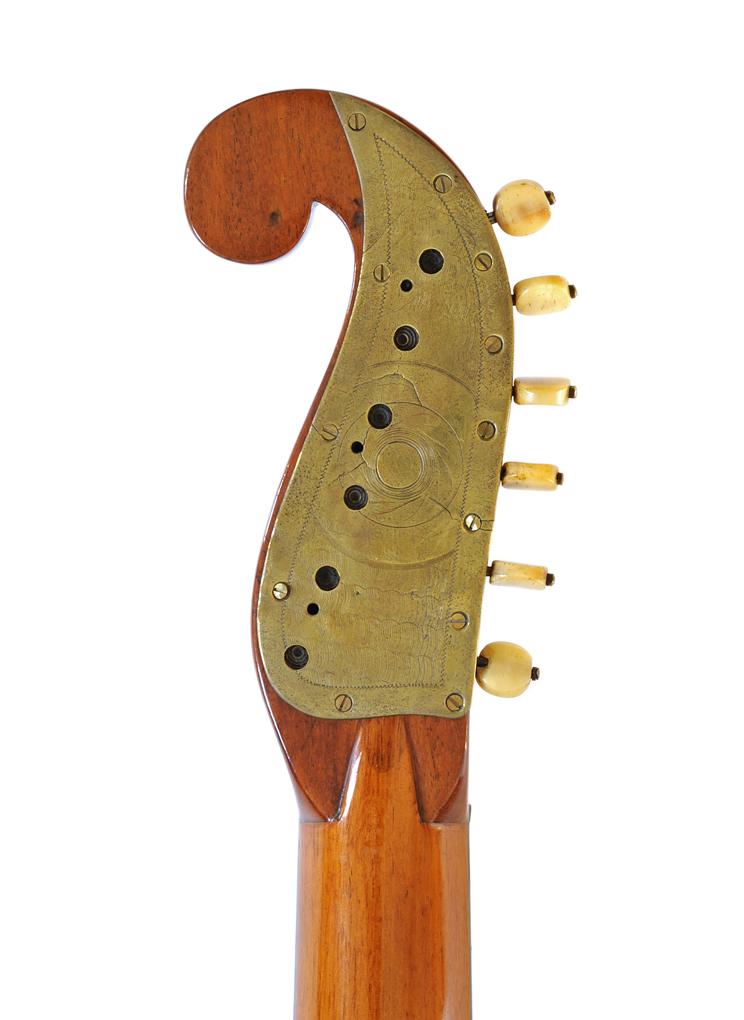
1840's Ivory Fingerboard Spanish Martin
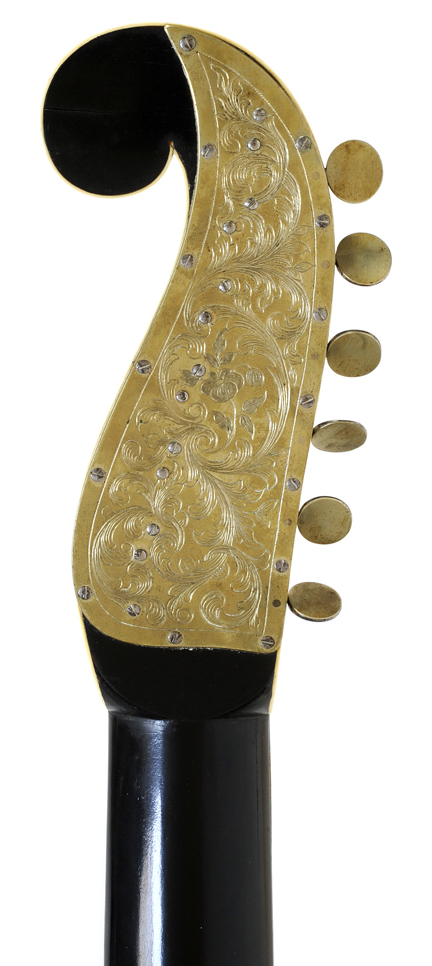
Martin soon developed a flat headstock which is similar in shape to the headstock seen on Martins to this day. These early headstocks sported ebony or ivory pegs. The ivory pegs would remain an option into the early 20th century.
Ebony and Ivory Pegs
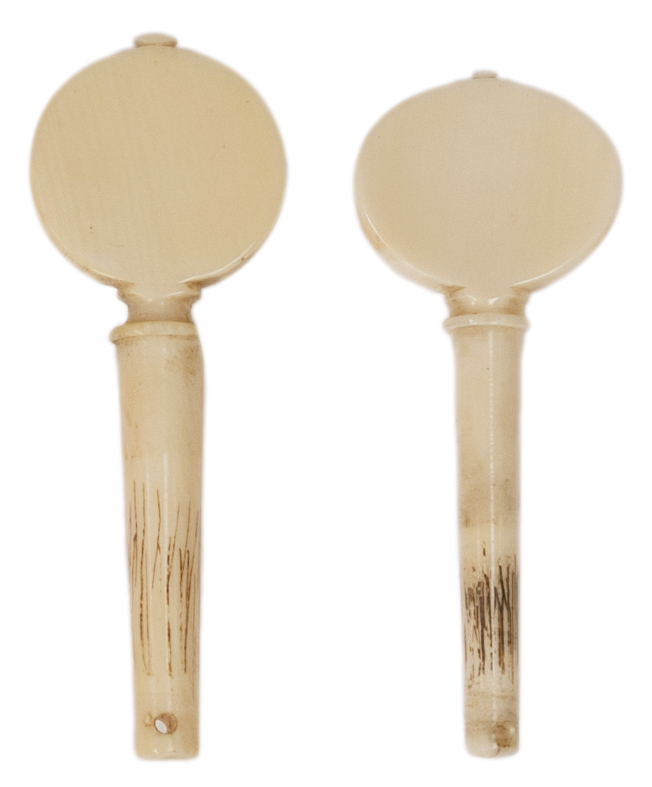
1840's Martin "Spanish Style" Guitar
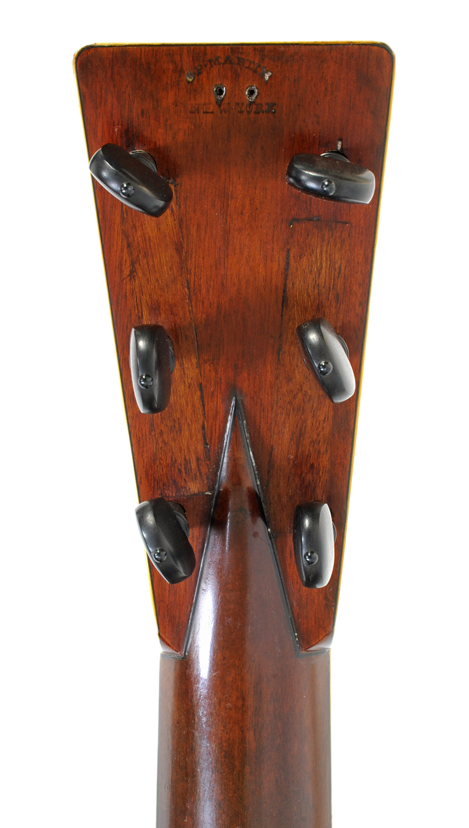
Ivory pegs vary in shape, with earlier buttons that are round and later buttons that are oval, and later 19th Century pegs that are not quite symmetrically round or oval but tapering slightly toward the peg inserted into the headstock.
This photo is actual size on a 1920x1200 display.

1840 "Renaissance" Martin, 1840's 1-21 zig-zag Martin, 1867 Martin 0-34, 1870's Martin 2 1/2 - 26, 1880's Martin 1-21, 1888 Martin 2-24, 1894 Martin 0-42, 1896 Martin 2-42, 1899 Martin 1-28.

Earlier pegs were more consistent in thickness, with later pegs tapering to a thin edge at the top of the button.
Most, but not all ivory pegs, have a small decorative element on the top of the button, which varies from one to the other in size and shape, usually carved from the ivory, but some in black, or abalone, as on this 1840's "Renaissance" Martin.
1840's Martin "Renaissance" Guitar
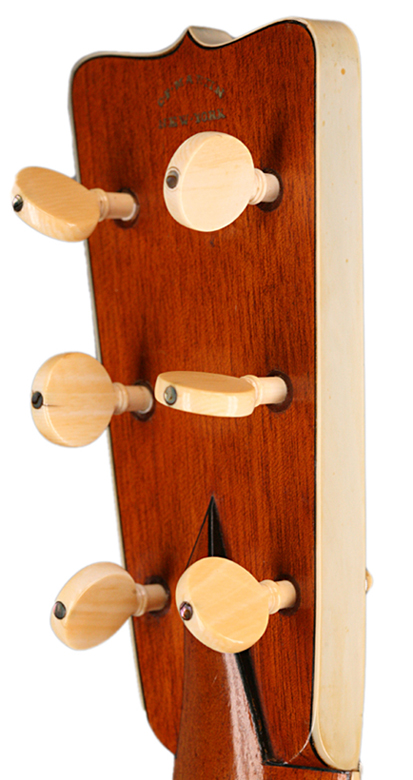
This Martin & Coupa has unusual ebony
tuner buttons with pearl on the end of the post that shows from the
front of the headstock.
Martin & Coupa
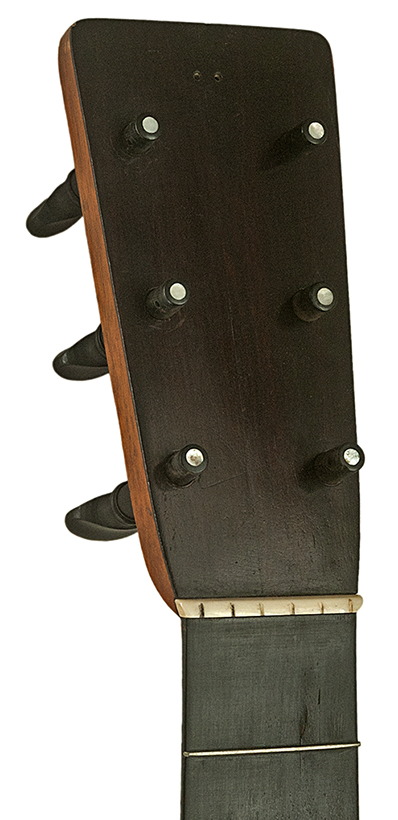
1894 Martin 0-42
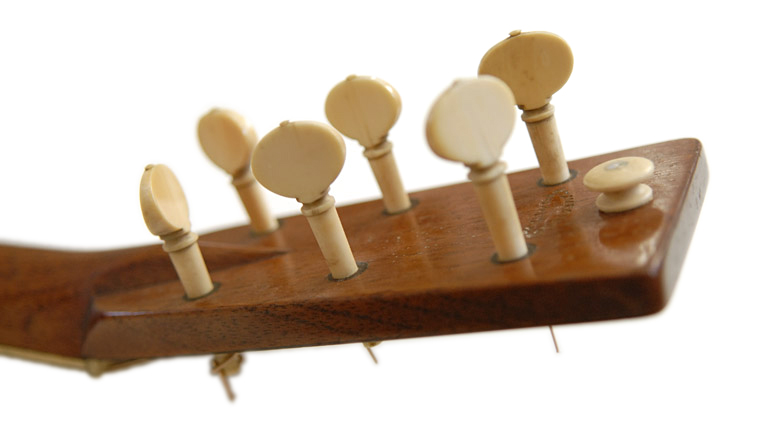
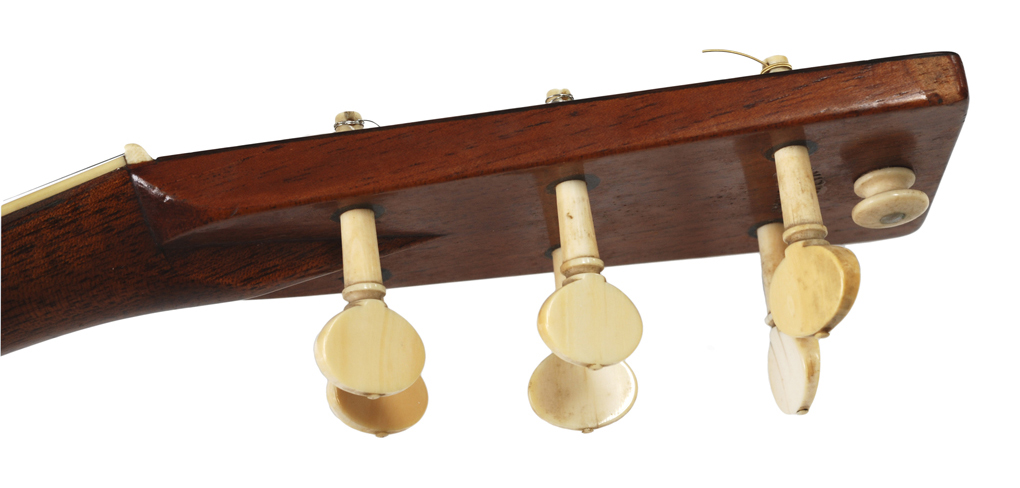
1870's Martin 2 1/2 - 26
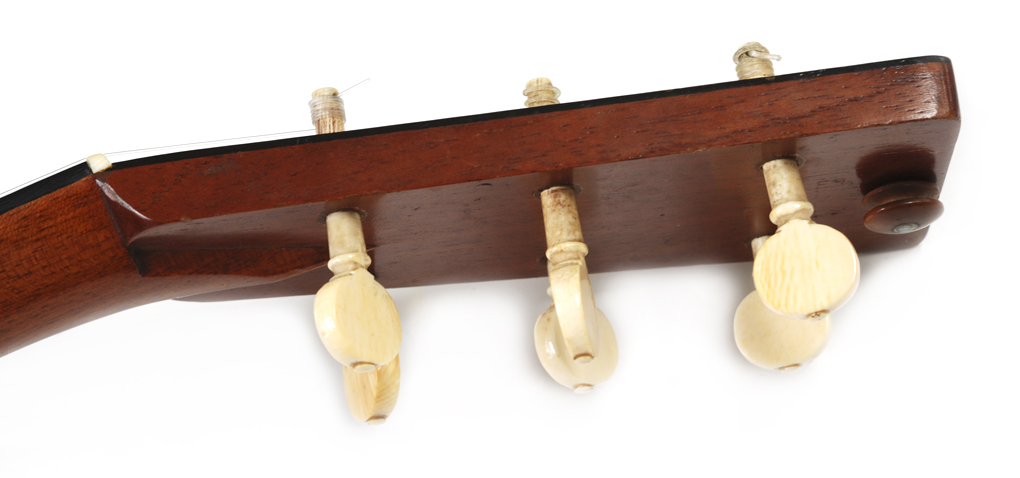
c. 1867 Martin 0-34
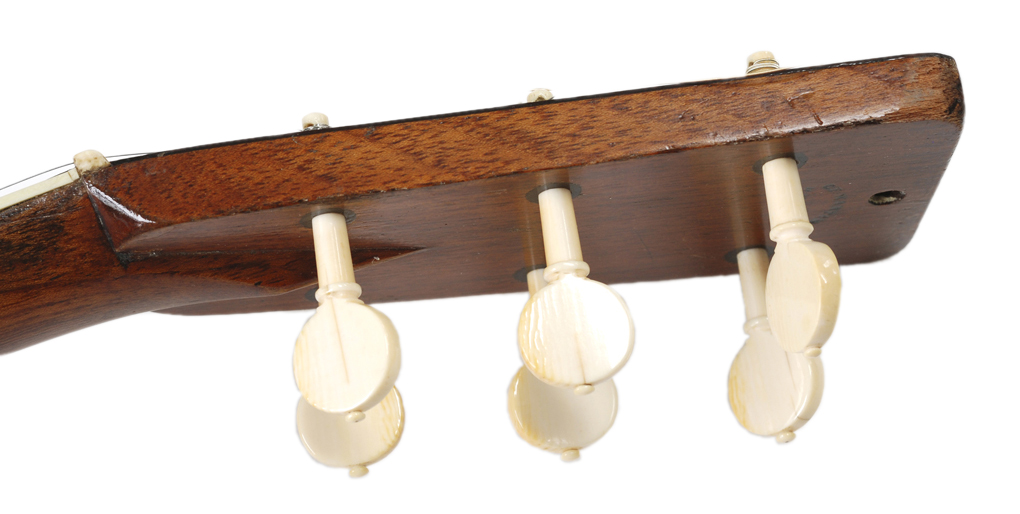
1896 Martin 2 1/2 - 42
You can see here that one peg has been replaced by another which is rounder, with a larger decorative element on the top.
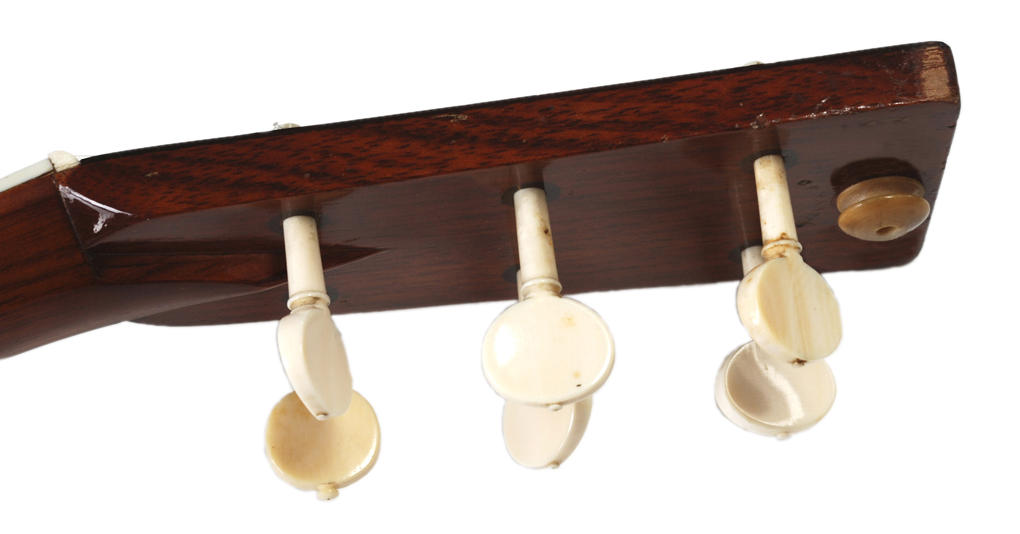
1899 Martin 1-28
This set of ivory pegs has three with small white decorative elements on the buttons, and three with flush black dots. It is quite possible that this set is all original to the guitar, with Martin having used pegs from two different batches, as the size and shape of the buttons are quite similar.
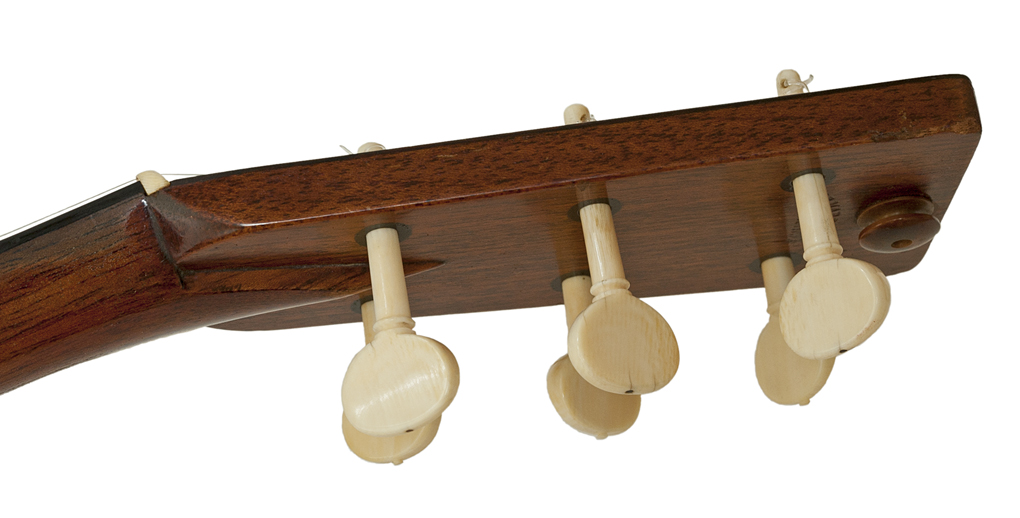
12 Fret Gears
By the 1850's, most Martins used geared tuning machines, the first of which bore the name "Jerome".
Martin 1860 2-24 with Jerome tuners
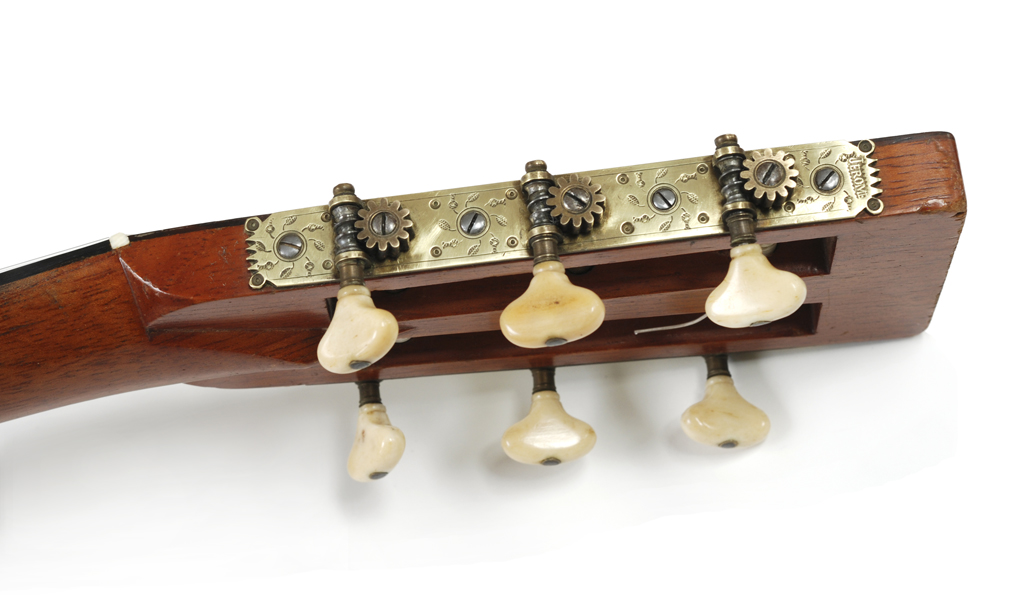
While Jerome tuners with bone buttons appear on the earliest Martins, these rare large bone rollers appear on only the earliest Jerome tuners.
1840's Spanish Style Alternate X Brace Martin Guitar
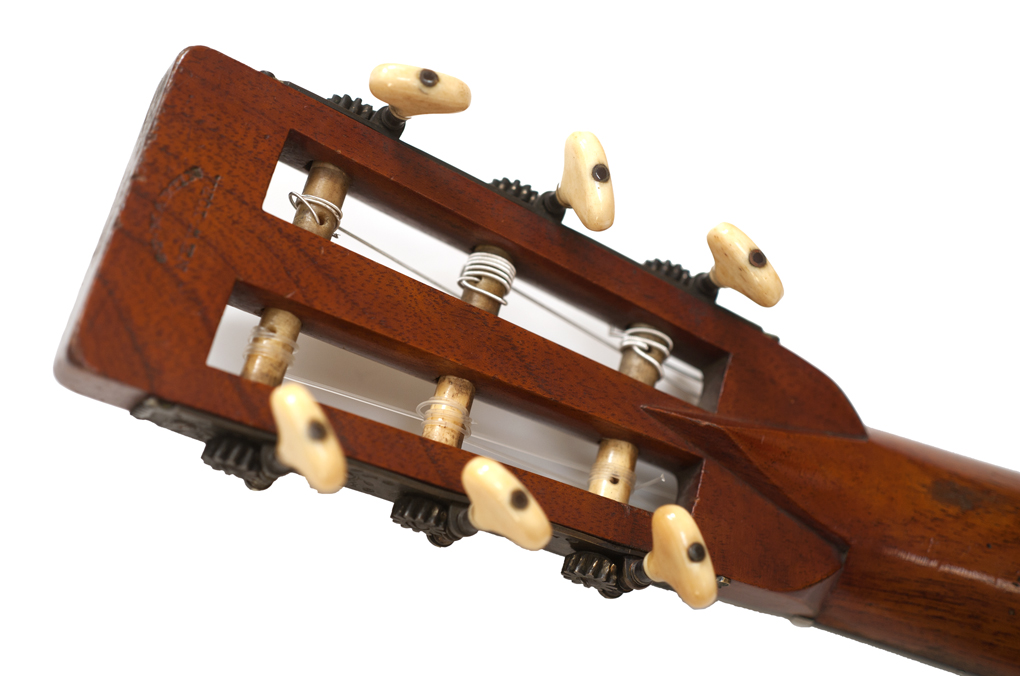
The very earliest Jerome tuners also have what I call "barrel" gears, with a flat round top, in addition to the bone rollers.
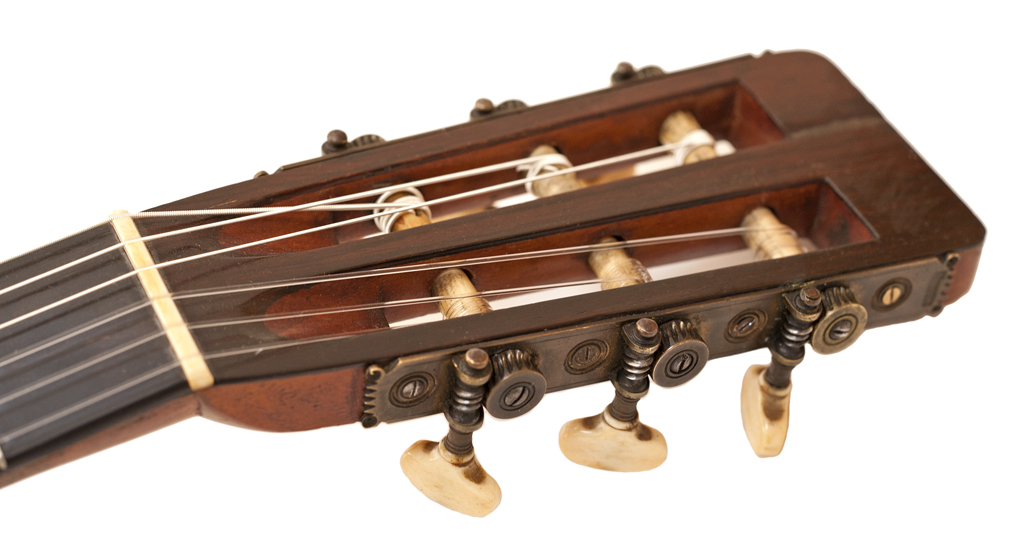
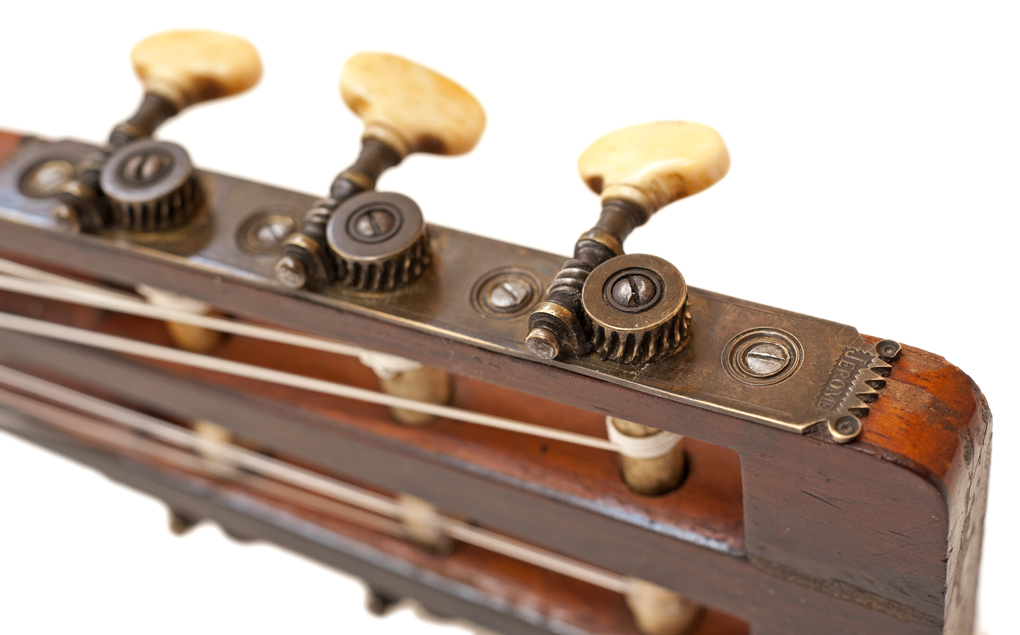
On finer early Martins, Jerome tuners are sometimes also seen with fancier, ornate carved pearl buttons.
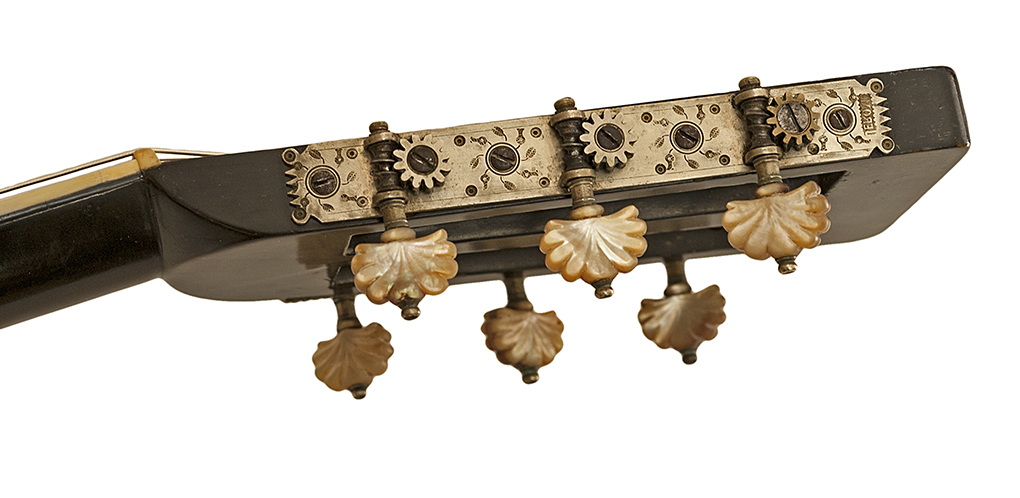
The 19th Century Tuners, also with thick, heavy gears, made after the Jeromes are said to have been made by Seidel
Martin 1870's 1-26
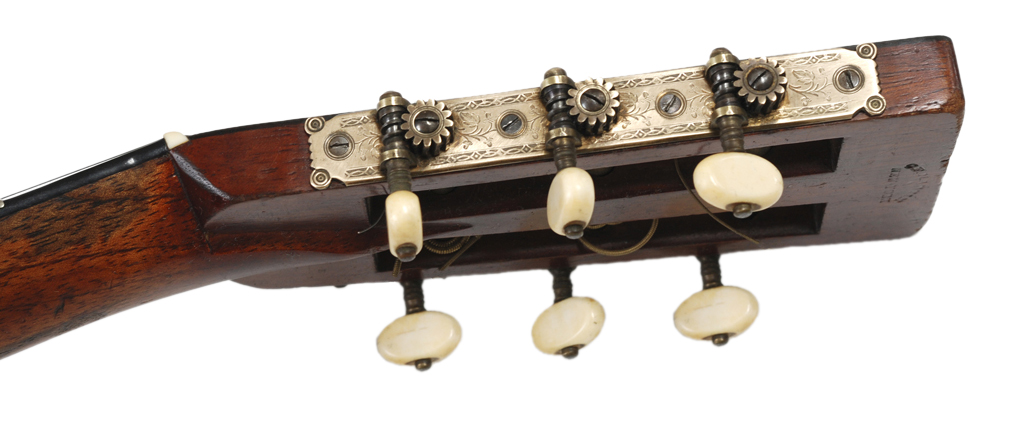
Martin 1870's 1-28
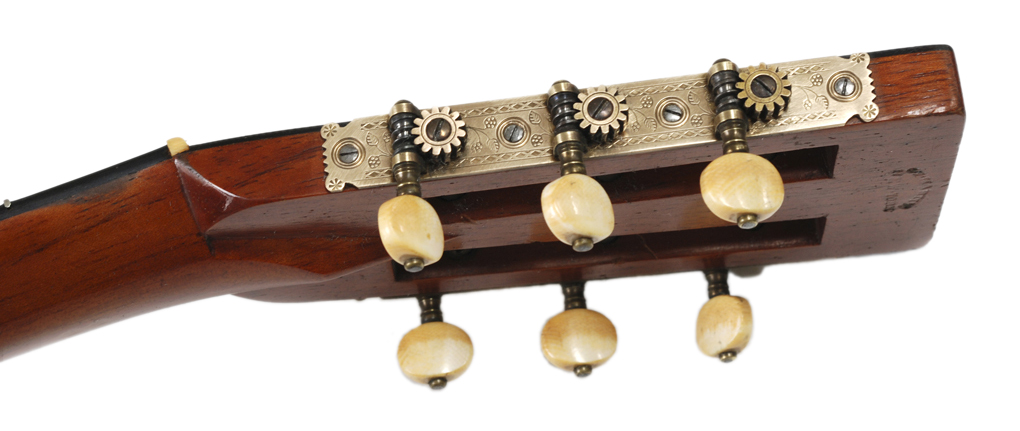
Martin 1870's 0-40
This tuner, generally seen only on the uncommon Style 40, is perhaps the most exquisite tuner seen on a Martin, featuring silver "Teddy Bear" style plates, and pearl buttons. It is not known who made these beautiful tuners.
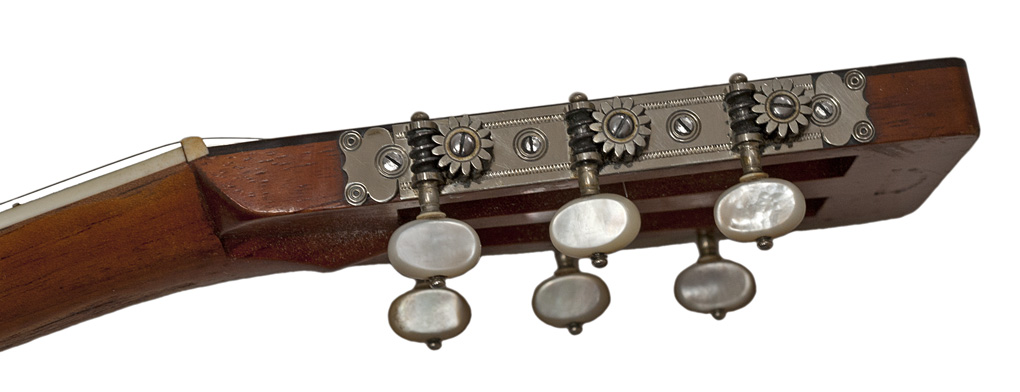
Martin 1870's 2-27
I can't say who made these unusual brass tuners that sometimes appear on the Style 2-27. With the "Teddy Bear" shape, they are reminiscent of the silver tuner that appeared on the early Style 40. The brass plates are sometimes the only feature besides body size that separates the Style 27 from the Style 30, with it's Silver tuners.
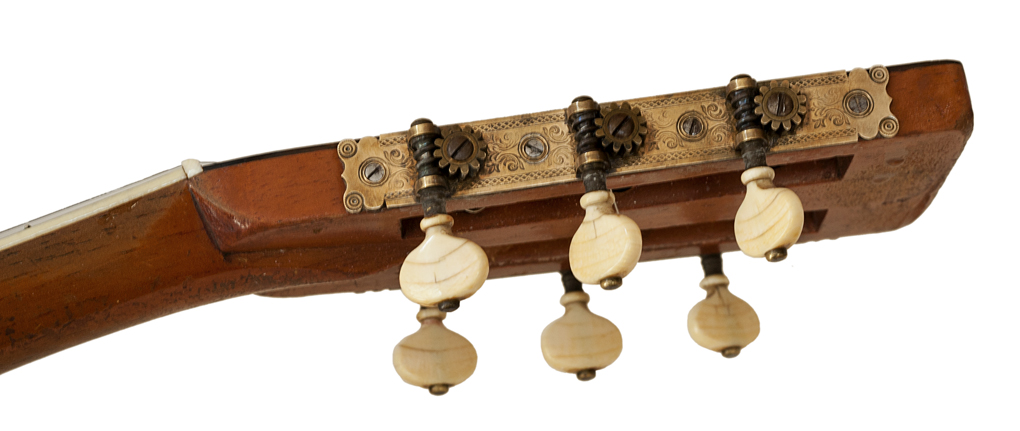
This is another uncommon tuner style that shows ups here on an unusual 1874 Martin with pearl buttons.
1874 Martin 1-28
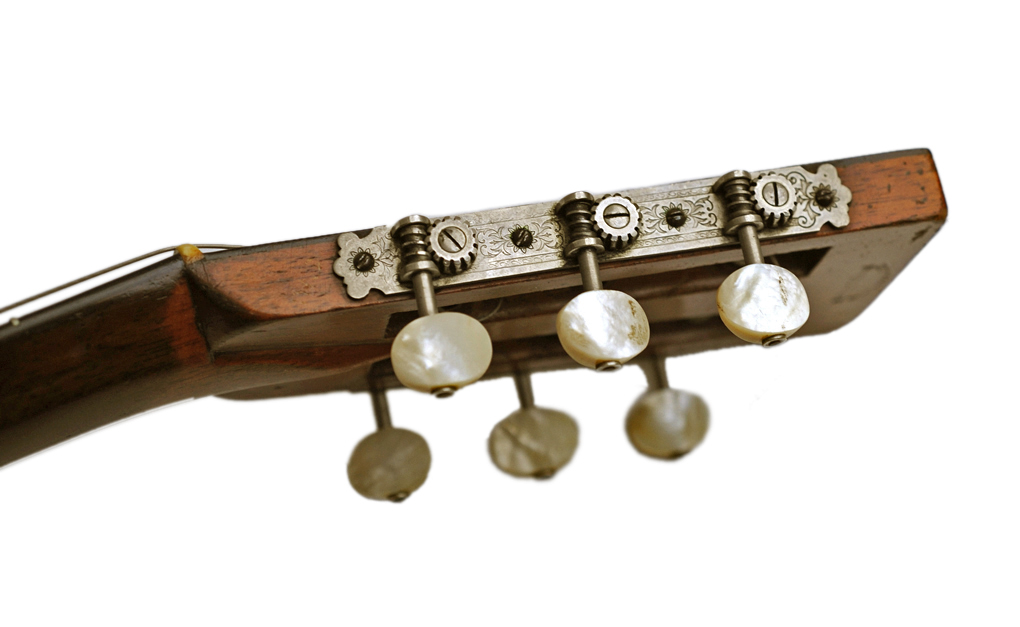
These three on a plate 12 fret tuners show that Martin used the Seidel style tuners with concentric circles on the corners at least through 1897.
Martin 1897 1-21
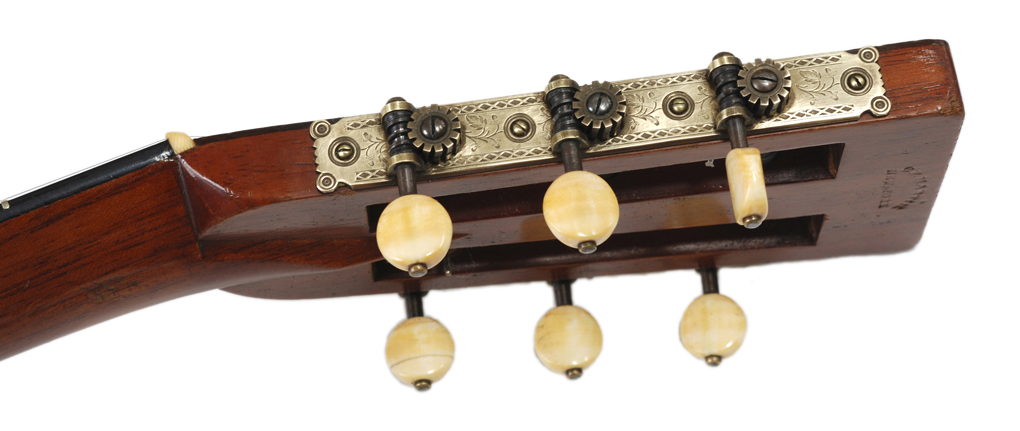
This 1902 Style 00-42 prototype for the Style 45, with pearl buttons, shows that the Seidel Style tuners with imprinted corners and those with concentric circles were used contemporaneously through the years.
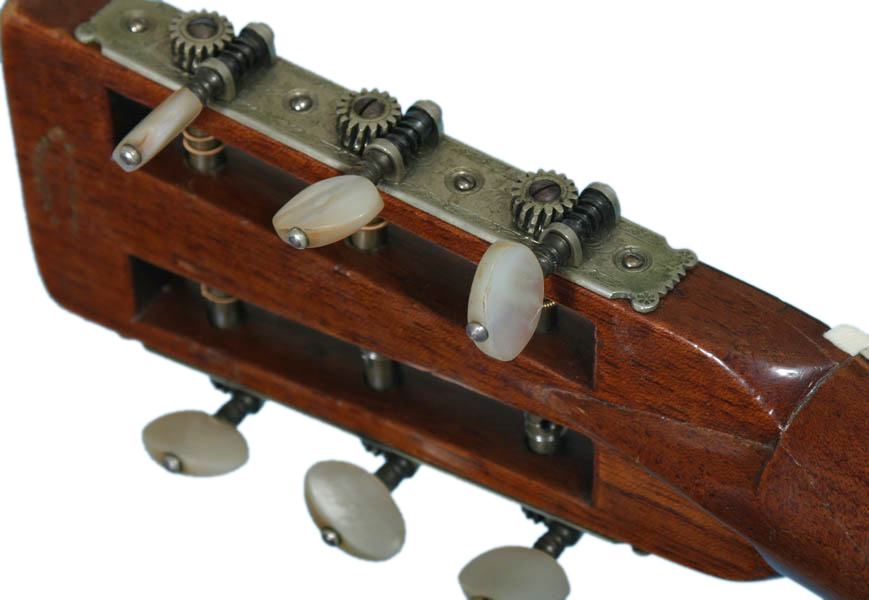
These three on a plate 12 fret tuners with saw tooth ends and rounded "Mickey Mouse" corners, beveled gears, and an early engraved design were made by Waverly.
A number of high end guitars and mandolins, seen often through the teens, were shipped with Waverly tuners with beautiful fancy buttons produced by Handel.
These tuners show that the Waverly tuners replaced the Seidels between 1902 and 1905.
1905 00-42S
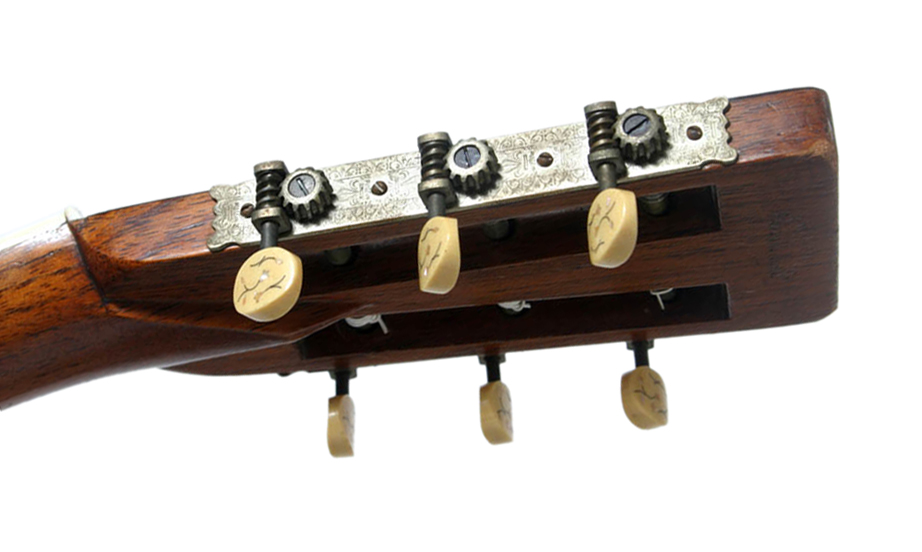
vintagemartin.com
To See Robert Corwin's Classic Photography of Folk and Roots Musicians, visit:
For Information on Photography for
Exhibition, Publication, CD's, Promotion, Web Pages, Tour Books,
to Purchase Photographic Prints, or
If You Have Questions or Suggestions About This Web Site or Vintage Martin Guitars:
e-mail: Robert Corwinentire site copyright ©1998 through 2010 Robert Corwin/Photo-Arts. All rights reserved.